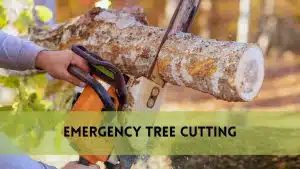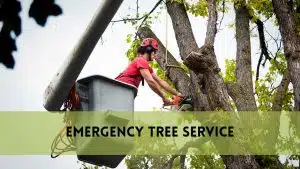The ash tree, known for its resilience and graceful stature, has been a cherished addition to landscapes across the world for generations. However, the emergence of the emerald ash borer (Agrilus planipennis) in recent years has cast a shadow of uncertainty over the fate of these trees. As an ash tree owner, you are left with critical decisions to make: Can your ash tree be rescued from the brink of decline, or is it beyond salvation, necessitating its removal?
In this article, we will delve into the factors that determine the fate of your ash tree. We’ll explore the signs of infestation, potential treatment options, and the considerations that will help you decide whether to save your ash tree or say goodbye to a beloved member of your landscape. Join us on this journey to make an informed choice about the future of your ash tree and the well-being of your property.
What Are Ash Trees?
Ash trees are a genus of deciduous trees native to the Northern Hemisphere, including North America, Europe, and Asia. These trees are distinctive for their unusually pinnately complex leaves, which typically consist of numerous leaflets grouped along a central stalk.
Here are some major properties of ash trees:
1. Leaf Structure:
Ash tree leaves typically have 5–11 leaflets, with one leaflet at the tip. The leaflets are positioned opposite each other along the central stem.
2. Bark:
The bark of ash trees varies depending on species, but it is usually gray or brown with a unique diamond-shaped pattern of ridges.
3. Seeds:
Ash trees release flying seeds, known as “ash keys” or “helicopters,” which are enclosed within papery seed pods. The wind disperses these seeds.
4. Wood:
Ash wood is prized for its strength, flexibility, and straight grain. It has been utilized in a variety of applications, including furniture, sporting equipment (such as baseball bats and hockey sticks), and musical instrument manufacture.
5. Fall Foliage:
In the autumn, ash trees are recognized for their beautiful display of colorful foliage, which can include shades of yellow, purple, and red.
6. Species Variation:
There are several species of ash trees, with the most prevalent in North America being the white ash (Fraxinus americana) and the green ash (Fraxinus pennsylvanica). Other species, such as the European ash (Fraxinus excelsior) and the black ash (Fraxinus nigra), are found in different places.
7. Threats:
In recent years, ash trees have suffered serious threats, notably from the invasive Emerald Ash Borer (EAB), which has ravaged ash populations across North America. EAB larvae feed on the inner bark of ash trees, impairing their ability to transfer water and nutrients and finally killing the tree.
The fate of your ash tree is determined by various elements, the most important of which are it’s health and the presence of the damaging Emerald Ash Borer (EAB). The persistent invasion of the EAB, which has destroyed ash populations across North America, has posed severe risks to ash trees. Here’s a deeper look at your alternatives:
Can I Save My Ash Tree
Ash trees have been facing significant threats from the emerald ash borer (EAB), a destructive insect that has caused widespread damage to ash tree populations in North America. If your ash tree is affected by EAB or any other issue, here are some steps you can take to try to save it:
1. Tree Health Evaluation:
The first step is to analyze the health of your ash tree. A healthy ash tree has vivid foliage, sturdy branches, and no signs of serious damage or disease. If your tree exhibits any of these qualities, it is worth considering preservation.
2. Infestations of the Emerald Ash Borer (EAB):
If you notice D-shaped exit holes, serpentine pathways beneath the bark, or a decreasing canopy on your ash tree, it may be in severe condition. If left untreated, EAB infestations can weaken and eventually kill ash trees.
3. Treatment Alternatives:
Professional treatment methods may be available if an EAB infestation is found early. Certified arborists can use insecticides to protect ash trees from additional EAB damage. However, the effectiveness of therapy varies, and not all trees can be rescued.
4. Speak with an Arborist:
Consult with a trained arborist who specializes in ash tree health to make an informed decision. They can analyze the state of the tree and advise on whether preservation is feasible and cost-effective.
5. Environmental Concerns:
Consider the environmental and landscape implications of removing ash trees. Healthy ash trees provide important ecological services such as shade, oxygen production, and wildlife habitat.
6. Local Rules and Regulations:
Keep in mind local legislation and limits when it comes to removing ash trees, especially if they are infested with EAB. Specific measures are in place in some locations to prevent the spread of this invasive pest.
7. Tree Replacements:
If you decide to remove your ash tree, consider replacing it with a different species to preserve biodiversity and limit the possibility of another invasive insect decimating your tree population.
Uses for Dead Ash Trees in Your Garden
Even though the trees in your yard have died, they can be resurrected in a variety of ways.
1. Landscaping Materials:
Rather than removing dead trees, you can repurpose them as landscaping materials. Allow the wood to be processed into landscape timbers or chipped to make mulch or compost for gardening and home landscaping tasks.
2. Art and Furniture:
If a tree has sentimental meaning for your family, you can commission a competent carpenter or chainsaw carver to create art or furniture out of it. You may turn a cherished tree into a treasured family heirloom this way. You can discover an appropriate craftsperson through organizations such as the Michigan Association of Woodturners, the United Chainsaw Carvers Guild, or the Michigan Woodworkers’ Guild.
3. Firewood:
Trees infected by the emerald ash borer can still be utilized for firewood, but it is critical that this firewood not be transported to other sites. Be careful of firewood movement laws and quarantine rules; for further information, contact your county MSU Extension office.
FAQs
How can I tell if my ash tree is healthy or if it has been infected with the Emerald Ash Borer (EAB)?
Look for characteristics of a healthy tree, such as vivid foliage and tough limbs, to assess the health of your ash tree. D-shaped exit holes, serpentine tunnels under the bark, and a thinning canopy are all indications of EAB infection.
Can an EAB-affected ash tree be saved?
Treatment may be possible if EAB exposure is detected early. In order to protect ash trees from additional EAB damage, professional arborists can spray insecticides. Treatment success, however, varies depending on factors such as the condition of the tree and the level of infestation.
Is it necessary to remove my ash tree if it has EAB?
If the EAB infestation is serious or the tree poses a safety danger, it may be essential to cut it down. However, it is best to speak with a qualified arborist to discuss treatment alternatives or determine whether removal is the best option.
Are there any rules regarding the removal of ash trees infected by EAB?
Specific rules are in place in some areas to prevent the spread of EAB. Before removing an afflicted ash tree, it is critical to check local regulations and secure the necessary licenses.
Can I replace my ash tree if I cut it down?
To maintain biodiversity and the visual attractiveness of your landscape, you can replace another tree. Select a tree species that is resistant to local pests and diseases.
Conclusion
The decision to save or remove an ash tree affected by Emerald Borer depends on factors like the tree’s health,the extent of variation, the treatment option, and local regulations. Consulting with a certified arborist is crucial for making an informed choice. Preservation may be possible for healthy trees, but for severely infested or hazardous trees, removal is often the safest option.




